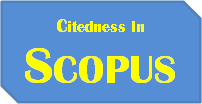Analisis Efektivitas Pelaksanaan E Government di Tingkat Kelurahan
 Abstract views: 616
,
Abstract views: 616
,
 PDF downloads: 1384
PDF downloads: 1384
Abstract
This study aims to analyze the practice of the implementation of e-government at the kelurahan level as the lowest level of governance. This study employed the descriptive qualitative method. Besides that, the search through various official documents record, in print and electronic mass media was also conducted. The results of the study showed that the level of e-government at the kelurahan level has not run effectively due to the lack of optimal infrastructure provision, efficiency, community satisfaction, apparatus adaptation to application, development, and lifespan. With technology, the government is able to use innovative ways of communicating with communities, these facilities can ideally improve the quality of government services and provide greater opportunities for the public participation in public service processes to support smartcity. Therefore, there must be efforts to improve such obstacles which can be done by improving infrastructure, developing human resource and strengthening regulations.
Downloads
References
Abu-Shanab, E. A. (2017). E-government familiarity influence on Jordanians’ perceptions. Telematics and Informatics, 34(1), 103–113. https://doi.org/10.1016/j.tele.2016.05.001
Bigdeli, A. Z., Kamal, M. M., & De Cesare, S. (2013). Electronic information sharing in local government authorities: Factors influencing the decision-making process. International Journal of Information Management, 33(5), 816–830. https://doi.org/10.1016/j.ijinfomgt.2013.05.008
Buffat, A. (2015). Street-Level Bureaucracy and E-Government. Public Management Review, 17(1), 149–161. https://doi.org/10.1080/14719037.2013.771699
de Araujo, M. H., & Reinhard, N. (2013). Factors influencing the Use of Electronic Government Services in Brazil. EGOV/ePart Ongoing Research, 140–149. https://doi.org/10.5700/579
Gedeian, A. (1991). Organization Theory and Design. University of Colorado at Denve.
Gibson, James L; Ivancecih, John M. ; Donnelly, J. H. (1996). Organisasi : perilaku, struktur (1st ed.). Jakarta: Bina Rupa Aksara.
Hertiarani, W. (2016). IMPLEMENTASI KEBIJAKAN E-SAMSAT DI JAWA BARAT. Jurnal Ilmu Administrasi : Media Pengembangan Ilmu Dan Praktek Administrasi, 13(3), 419–440. Retrieved from http://stialanbandung.ac.id/ojs/index.php/jia/article/view/102
Indrajit, R. E. (2002). Electronic Government: Strategi Pembangunan dan Pengembangan Sistem Pelayanan Publik Berbasis Teknologi Digital. Yogjakarta: Andi.
Miftah. (2015). KOTA BANDUNG TERPILIH MENJADI FINALIS SMART CITY DI BARCELONA. Retrieved from https://portal.bandung.go.id/posts/2015/11/19/bVev/kota-bandung-
Moleong, L. J. (2001). Metodologi Penelitian Kualitatif. Bandung: PT Remaja Rosdakarya.
Nam, T. (2014). Determining the type of e-government use. Government Information Quarterly, 31(2), 211–220. https://doi.org/10.1016/j.giq.2013.09.006
Song, M., & Guan, Y. (2015). The electronic government performance of environmental protection administrations in Anhui province, China. Technological Forecasting and Social Change, 96, 79–88. https://doi.org/10.1016/j.techfore.2014.10.001
Sosiawan, E. A. (2008). Tantangan Dan Hambatan Dalam Implementasi E-Government Di Indonesia. Seminar Nasional Informatika, 2008(semnasIF), 99–108.
Venkatesh, V., Thong, J. Y. L., Chan, F. K. Y., & Hu, P. J. H. (2016). Managing citizens’ uncertainty in e-government services: The mediating and moderating roles of transparency and trust. Information Systems Research, 27(1), 87–111. https://doi.org/10.1287/isre.2015.0612
Copyright (c) 2018 Sawala : Jurnal Administrasi Negara

This work is licensed under a Creative Commons Attribution-NonCommercial-ShareAlike 4.0 International License.










